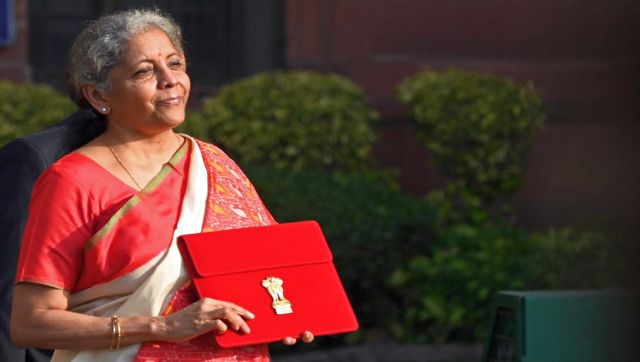The government has said it will reduce the fiscal deficit target to 4.5 percent of GDP by March 2026. It will have to cut its borrowing by two percentage points over the next three years to achieve the target. The axe usually falls on social sector spending. It should not as the pandemic has in crore eased poverty levels and insecurity.
There is a strong case for increasing the meagre pensions under the National Social Assistance Programme (NSAP). Manmohan Singh as finance minister had initiated the Indira Gandhi Old Age Pension Scheme in 1995.
At that time only destitute persons in the below poverty level (BPL) category aged 65 years and above were eligible for the monthly pension of Rs 75. In 2006, the finance minister raised the amount to Rs 200 a month and all BPL persons aged 65 and above were covered.
Currently there are 21.94 million such pensioners. The amount should be raised to at least Rs 500 a month to account for the erosion of the value of the rupee during these 15 years. This would cost Rs 13,164 crore against the budget provision of Rs 6,564 crore made last year.
In 2009, the Indira Gandhi Disability Pension Scheme was started. It entitles BPL persons with “severe disability” aged 18 years and above to a monthly pension of 200. (Those 80 years and older get Rs 500 a month). Fourteen years later, the pay-out deserves to be raised. The enhanced annual outlay for 8.73 lakh beneficiaries would be Rs 524 crore.
Impact Shorts
More ShortsMere tokenism
BPL widows aged 40 to 64 years became eligible for a monthly pension of Rs 300 from 2009. The amount smacks of tokenism 14 years later. It would cost the government just Rs 4,020 crore a year to raise the amount to Rs 500 a month for 6.7 million widows on the rolls.
Pregnant women and lactating mothers are eligible to a payment of Rs 5,000 upon the birth of the first live child in their families. But the amount is restricted to only one child, though India does not have a one-child policy. The same benefit is given to the second child if it happens to be a girl.
The National Food Security Act (NFSA), 2013, puts no restriction on the number of children. It also entitles pregnant women and lactating mothers to Rs 6,000 upon the birth of a child in addition to free meals in an anganwadi during pregnancy and for six months after childbirth. The Finance Minister should lift the restriction on number of children and also enhance the amount to at least Rs 6,000 a month.
In a letter to the finance minister in December, 51 academics, most of them economists, sought the above changes. They calculated that the enhanced maternity benefit will cost Rs 8,000 crore at the current birth rate of 19 per thousand, 90 percent coverage and 60 percent central government contribution.
What can govt do?
In fact, the government needs only to redeploy the savings it will make by merging the food grains entitlements under the Pradhan Mantri Garib Kalyan Anna Yojana (PMGKAY) and those under NFSA. From 1 January, the free foodgrains of 5 kg per person will no longer be available. These were given in addition to the NFSA entitlement of 5 kg per person of rice, wheat or millets from April 2020 in the wake of the pandemic.
To sweeten the withdrawn of the bonus grains, the government has made NFSA entitlements free. Earlier, a family of five would pay Rs 75, 50 or 25 respectively a month depending on whether they opted for rice, wheat or millets.
Withdraw PMGKAY entitlements
The withdrawal of the PMGKAY entitlements will save the government Rs 100,914 crore in a full year, assuming this year’s offtake next year (22 million tons of rice and 7.6 million tons of wheat) at the cost of Rs 36,700 a ton of rice and Rs 25,887 a ton of wheat. It will lose Rs 12,300 crore that NFSA beneficiaries were paying for rice and wheat. But there will still be a substantial savings, which should go to provide some relief to those most in distress.
(The writer is a senior journalist; and editor www.smartindianagriculture.com He tweets @VVNFernandes)
Read all the Latest News , Trending News , Cricket News , Bollywood News , India News and Entertainment News here. Follow us on Facebook, Twitter and Instagram.


)

)
)
)
)
)
)
)
)



